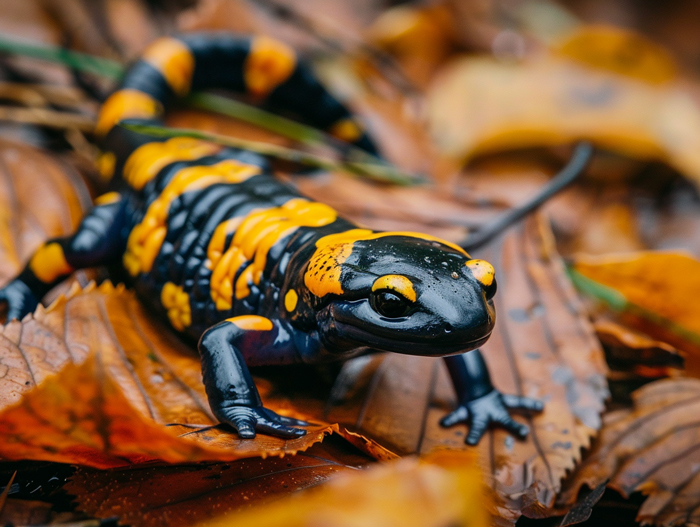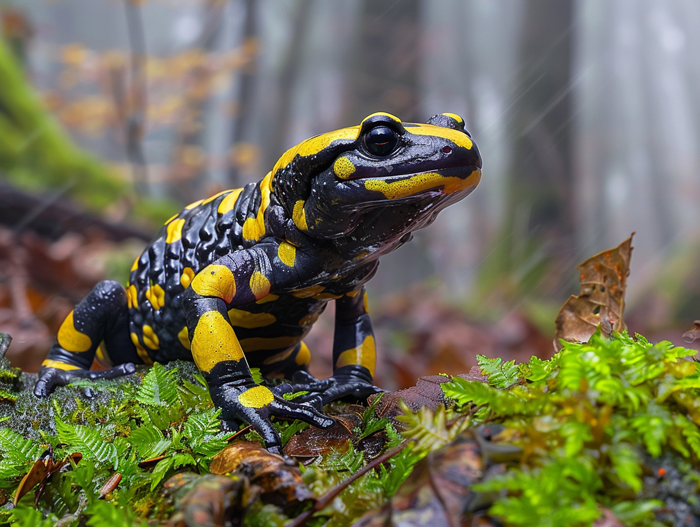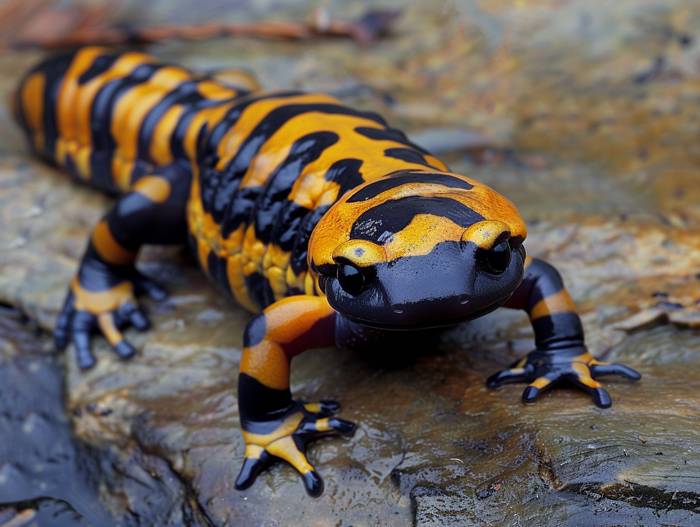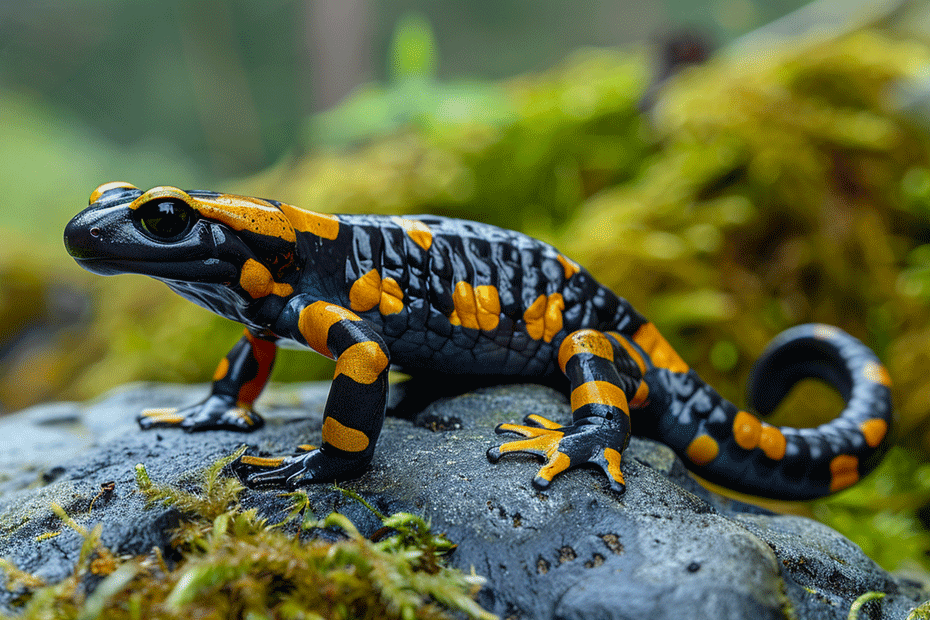Curious about whether salamanders hibernate? You’ve come to the right place. These fascinating creatures have some unique behaviors when it comes to surviving the cold winter months. Let’s jump into the world of salamanders and uncover the truth about their hibernation habits.
Salamanders are known for their ability to adapt to various environments, and hibernation is a key part of their survival strategy. Understanding how salamanders hibernate can provide valuable insights into their biology and behavior. So, let’s explore the mysteries behind this intriguing aspect of salamander life.
From the types of salamanders that hibernate to the specific conditions that trigger this behavior, there’s much to learn about these elusive creatures. Stay tuned as we unravel the secrets of salamander hibernation and gain a deeper appreciation for these remarkable amphibians.
Key Takeaways
- Salamanders do hibernate as a strategy to conserve energy and survive the cold winter months.
- They hibernate in underground burrows or protected areas, slowing down their metabolic rate and reducing activity to conserve energy.
- Hibernation is crucial for salamanders’ survival, especially during harsh winter conditions when food sources are scarce.
- Factors like temperature and habitat influence salamander hibernation patterns, highlighting their adaptive behavior.
- Understanding salamander hibernation provides valuable insights into their biology and enhances appreciation for these unique amphibians’ survival tactics.
Do Salamanders Hibernate?
Salamanders are fascinating creatures known for their unique behaviors, such as hibernation. If you’re wondering, “do salamanders hibernate?” – the answer is a resounding yes. Let’s investigate deeper into this intriguing natural phenomenon.

Key Points to Understand:
- Hibernation Definition: Hibernation is a state of dormancy that helps animals conserve energy during extreme environmental conditions. It is vital for salamanders, especially in cold winter months.
Salamander Hibernation Process:
- Location: Salamanders usually hibernate in underground burrows, leaf litter, or other protected areas that provide insulation from the cold.
- Physiological Changes: During hibernation, a salamander’s metabolic rate slows down significantly, allowing them to survive with minimal food intake.
- Behavioral Adaptations: They enter a state of torpor, reducing their activity to conserve energy until conditions improve.
Importance of Hibernation for Salamanders:
- Survival: Hibernation helps salamanders survive harsh winter conditions when food sources are scarce.
- Reproduction: Some salamander species use hibernation as a cue to initiate breeding activities in the spring.
Factors Influencing Hibernation Patterns:
- Temperature: Salamanders adjust their hibernation patterns based on ambient temperatures to ensure optimal survival.
- Habitat: The availability of suitable hibernation sites influences where and how salamanders enter dormancy.
Understanding Salamander Hibernation:
Salamanders have evolved remarkable strategies to cope with challenging environments through hibernation. By understanding the intricate details of their hibernation patterns, we gain valuable insights into their biology and survival mechanisms. Remember, hibernation is not merely a period of sleep but a strategic survival tactic for these remarkable amphibians.
Reasons for Salamanders to Hibernate

Cold Weather Adaptation
Salamanders hibernate mainly to survive harsh cold weather conditions.
- During hibernation, salamanders slow down their metabolism and conserve energy.
- The cold temperatures trigger their hibernation instincts, allowing them to endure the winter without succumbing to the cold.**
Food Scarcity
Another crucial reason for salamanders to hibernate is food scarcity in winter.
- By hibernating, salamanders can avoid the scarcity of their usual prey, enhancing their chances of survival when food sources are limited.
- This adaptation helps them conserve energy and maintain their bodily functions until more abundant food sources become available.
How Salamanders Hibernate

When salamanders hibernate, they enter a state of dormancy to survive harsh environmental conditions. Here’s how salamanders hibernate:
Key Terms:
- Hibernation: A state of prolonged dormancy where an animal conserves energy.
- Metabolism: The chemical processes that occur within a living organism to maintain life.
Steps of Salamander Hibernation:
- Finding a Shelter: Salamanders seek out protective shelters like burrows, logs, or underground crevices.
- Reducing Metabolism: They slow down their metabolism significantly to conserve energy.
- Minimizing Activity: Salamanders become less active to save energy reserves.
- Limited Movements: They restrict movements to essential functions only.
- Living off Stored Energy: Salamanders rely on stored fat reserves to sustain themselves during hibernation.
- Temperature Regulation: Some species prefer specific temperature ranges during hibernation for optimal survival.
- Moisture Level: Maintaining humidity levels is crucial for their skin health during dormancy.
- Respiratory Changes: Salamanders alter their breathing patterns to adapt to reduced activity levels.
Salamanders’ ability to hibernate is a remarkable adaptation that ensures their survival during adverse conditions. Understanding how salamanders hibernate sheds light on the fascinating strategies these amphibians employ for their well-being.
Signs of Salamander Hibernation

When salamanders enter hibernation, there are several signs to look out for. Here are some key indicators to help you recognize when these fascinating amphibians are in their dormant state:
- Decreased Movement: You’ll notice a significant reduction in their activity levels as they conserve energy.
- Low Metabolism: Salamanders slow down their metabolic processes to cope with the cold temperatures.
- Seeking Shelter: They actively find secure shelters like burrows or logs to protect themselves from the harsh environment.
- Lack of Feeding: During hibernation, salamanders do not feed as they rely on stored energy reserves.
- Alterations in Skin Color: Some species might display changes in skin color during hibernation.
Understanding these signs of salamander hibernation can offer valuable insights into their behavior and survival strategies. Watch out for these clues to witness their remarkable adaptability to challenging conditions.
Conclusion
Understanding the signs of salamander hibernation is crucial for appreciating their remarkable adaptability. By recognizing key indicators like decreased movement, low metabolism, shelter-seeking behavior, lack of feeding, and changes in skin color, you gain valuable insights into how salamanders navigate challenging conditions. Their ability to hibernate showcases their resilience and survival strategies, making them fascinating creatures to observe in the wild. Keep an eye out for these signs to deepen your appreciation for the hidden world of salamander hibernation.

Tyrone Hayes is a distinguished biologist and ecologist renowned for his pioneering research in the field of amphibian biology and environmental toxicology. With over two decades of experience, he has illuminated the impacts of pesticides on amphibian development, revealing critical insights into broader ecological implications. Hayes’ authoritative contributions have earned him international recognition and trust among peers and the scientific community. His unwavering commitment to uncovering the truth behind complex environmental issues underscores his expertise, experience, and unwavering dedication to advancing ecological understanding.
